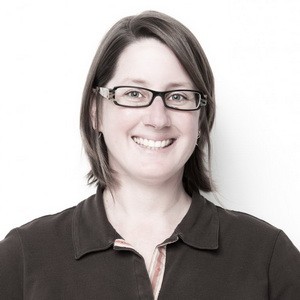Drawing Nature
Dr. Melissa FreyFormer Curator of Invertebrates
Dr. Melissa Frey is the Collection Manager, Malacology at the Burke Museum in Seattle, WA.
Why did you want to become a curator of invertebrate zoology?
I have always been curious about nature – I love to collect, identify, classify, study and learn. As I pursued a career in biology, eventually the idea of being a curator became more tangible, more real. Seemed like the perfect fit!
How did you come to be a curator?
Shortly after earning a bachelor of science degree in zoology and a master’s degree in oceanography, I worked as a biologist at the Smithsonian Institution. It was during this behind the scenes experience that I fell in love with museums and the work that they do. So I returned to graduate school to pursue a doctorate degree (PhD) in population biology, focusing on evolutionary, biogeographic and systematic studies of marine invertebrates. Working with museum collections played a large role in my graduate studies, as I studied collections from many of the major museums throughout the world. Upon finishing my dissertation, I became a research associate at the Royal BC Museum, and eventually landed the position of curator of invertebrates.
What did you do as a curator at the Royal BC Museum?
My work was split between collections and research and exhibits and learning programs. One of things that I love about my job is the constant change and opportunity to learn: studying specimens within the collection and translating this knowledge into research papers, exhibits and learning programs. And then there’s my favourite – fieldwork – collecting along the spectacular coastlines, forests and freshwaters of BC. As a curator, my role is to enhance our understanding of the natural history of this region, by collecting, identifying, studying and sharing. My hope is that other people also will be inspired, curious and delighted by learning about our natural world.
Stories by or about this person
Curator of Invertebrates (animals without backbones), Dr Melissa Frey, talks about the work and legacy of Dr Josephine F.L. Hart in a video for This Week in History.
Dr Melissa Frey talks about her background and role as curator of invertebrates (animals without backbones) at the Royal BC Museum.
Dr. Gavin HankeCurator of Vertebrate Zoology
Why did you want to become a curator?
I am a collector and I have always been interested in nature. As a student, I spent many hours collecting fishes, amphibians and reptiles and helped build a research collection at the University of Manitoba. I prepared skeletal material and reconstructed reptile skulls starting in high school and I have hands-on experience building models and dioramas. Museum work is a perfect fit for me.
How did you become a zoology curator?
My education? At the University of Manitoba I did a bachelor of science in general zoology and master of science on exotic fish introductions. As a hobby, during my master’s degree, I published research on placoderm fossils from the Interlake region of Manitoba. My doctorate degree (PhD) at the University of Alberta focused on fossil fishes but, instead of placoderms, I looked at acanthodians and an odd group of fishes thought to be related to the cartilaginous fishes (sharks, rays and ratfishes). Shortly after my PhD in 2001, I was hired back in Winnipeg as the zoology curator at the Manitoba Museum. In early 2004, I headed west.
What do you do as curator of vertebrate zoology?
I collect specimens for the museum (particularly fish, amphibian and reptile) and write research papers which are published and available internationally. I help other researchers with their work and maintain contacts with other agencies in British Columbia to obtain as many specimens as possible—from areas where we rarely visit (like northern BC). I have particular interest in exotic species introductions in Canada and the role of the pet trade and food industry in exotic species dispersal. Curators also help develop exhibits—both travelling exhibits and permanent displays here at the Royal BC Museum—and act as a filter to make scientific literature accessible to a general audience.



